#PERUGINO
Explore tagged Tumblr posts
Text
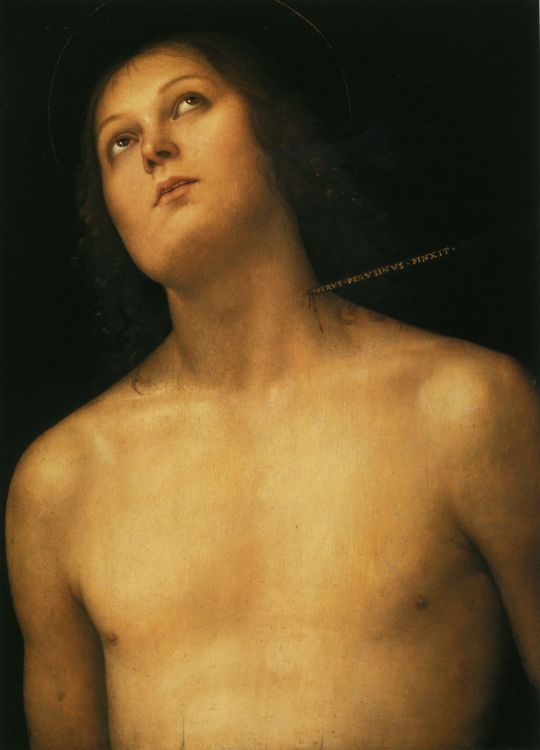
St. Sebastian (1494) - Perugino (Italian, 1446/1452-1523)
107 notes
·
View notes
Text

Mary with child, Saint Rose (?) and Catherine (?), Pietro Perugino, 1493-95
#art history#art#italian art#aesthethic#painting#perugino#rinascimento#mary#pietro perugino#jesus#saint rose#saint catherine#kunsthistorisches museum#15th century#catholic aesthetic
59 notes
·
View notes
Text

Perugino: Retrato dun rapaz, posiblemente o fillo do pintor
38 notes
·
View notes
Text

Perugino (Italian, ca.1450-1523) Delivery of the keys to Petrus, ca.1481-82 Vatican, Sistine Chapel, North wall
In the Gospel of Matthew 16:19, Jesus says to Peter, “And I will give unto thee the keys of the kingdom of heaven: and whatsoever thou shalt bind on earth shall be bound in heaven: and whatsoever thou shalt loose on earth shall be loosed in heaven.”
#perugino#art#fine art#christian art#christian#Jesus Christ#christianity#european art#europe#europa#italy#mediterranean#southern europe#classical art#traditional art#fine arts#the bible#st peter#saint peter#petrus#1400s#renaissance#european#oil painting#delivery of the keys to petrus#vatican#christentum#western civilization
75 notes
·
View notes
Text
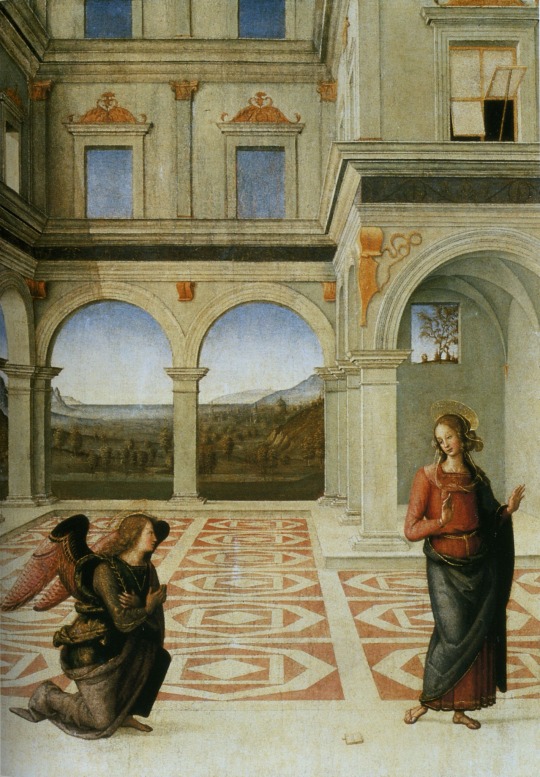
Pietro Perugino
#perugino#pietro perugino#annunciation#art#artwork#fine art#fineart#painting#art history#history of art#women in art
74 notes
·
View notes
Text
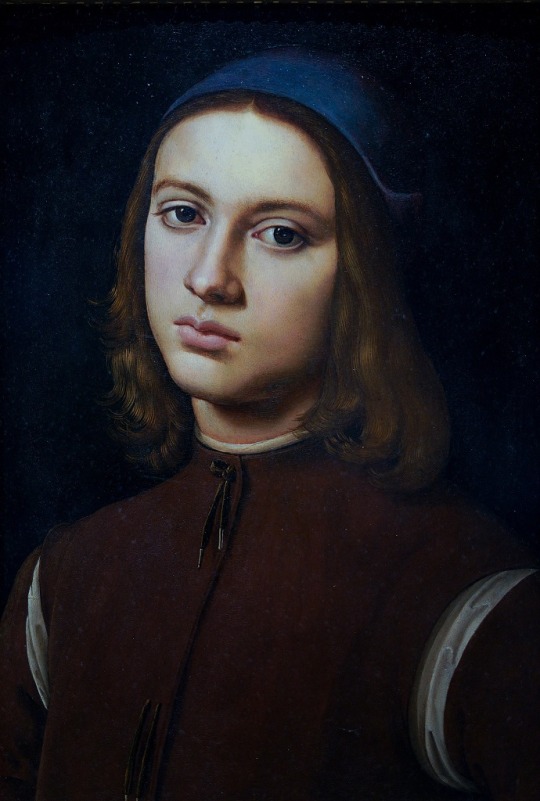
Pietro Perugino, Portrait of a Young Man, c. 1480, Uffizi ..
19 notes
·
View notes
Text
2025#
tant qu’il y aura des trains



6 notes
·
View notes
Text

Virgin and Child on the throne between Saint Jerome, Saint Augustine, four angels and two cherubs
Tempera and oil on wood - around 1500 / 1510
Le Pérugin (born Pietro di Cristoforo Vannucci - 1450-1523), Musée des Beaux-Arts, Bordeaux, Aquitaine, France.
#art#religious art#virgin mary#15th century art#painting#italian art#italian master#le pérugin#Perugino
4 notes
·
View notes
Text
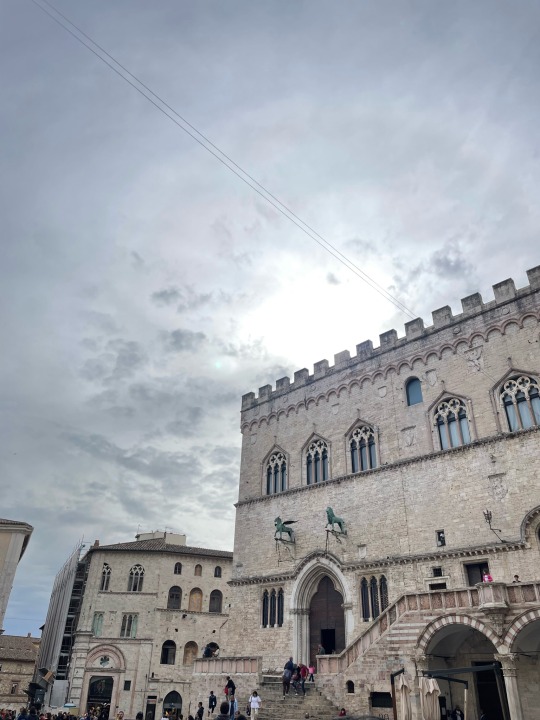



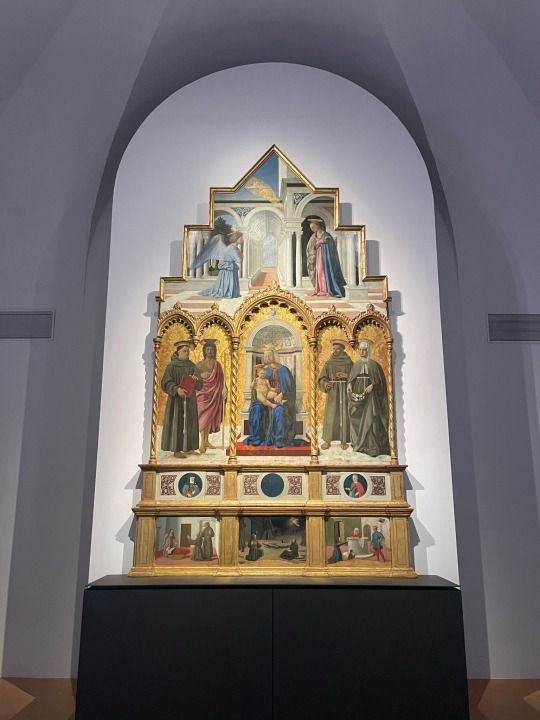



Perugia, 21.10.2023
18 notes
·
View notes
Photo

Crucifixión. 1485-1490. Pietro Perugino. Óleo sobre tabla. Medidas: 203 cm x 180 cm. Galleria Uffici. Florencia
15 notes
·
View notes
Text
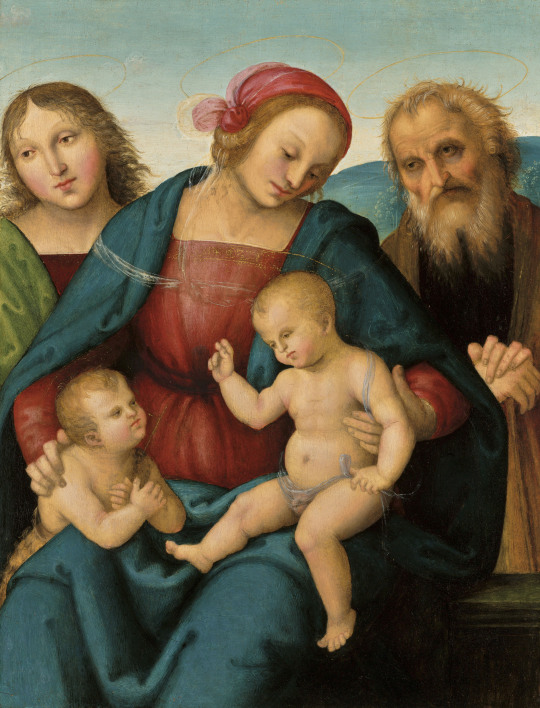
Pietro di Cristoforo Vannucci, called Perugino, The Holy Family with the Infant Saint John the Baptist and an Angel, date unknown
10 notes
·
View notes
Text
Città della Pieve celebra il Perugino e il Rinascimento con una grande mostra
Città della Pieve si prepara a rendere omaggio al suo figlio più illustre, il Perugino, in occasione del quinto centenario dalla sua morte. Dal 2 luglio al 30 settembre, la cittadina umbra ospiterà la mostra intitolata “…al battesimo fu chiamato Pietro. Il Perugino a Città della Pieve”, curata da Vittoria Garibaldi, Francesco Federico Mancini e Nicoletta Baldini, con un intervento di Antonio…

View On WordPress
#500AnniPerugino#arteitaliana#Capolavori#CittàDellaPieve#GalleriaNazionaleUmbria.#GallerieUffizi#KunsthistorischesMuseum#PinacotecaVaticana#StoriaDellArte#cultura#perugino#pietrovannucci#Rinascimento
2 notes
·
View notes
Text

#saw this painting at the Perugino exhibition and I’m obsessed#who is this boy looking out at us over hundreds of years of history#sure all the religious art was beautiful#but this is the portrait I fell in love with#perugino
2 notes
·
View notes
Text

Perugino: Entrega das chaves a San Pedro (Capela Sixtina. Vaticano), 1482
12 notes
·
View notes
Text
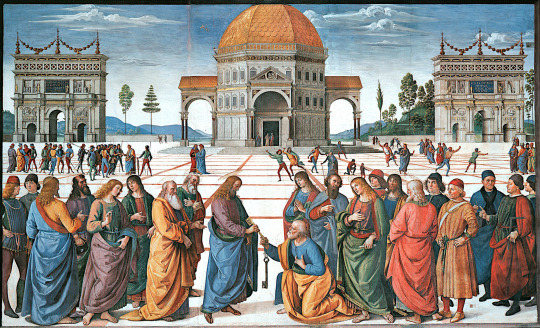
Perugino (Italian, ca.1450-1523) Delivery of the keys to Petrus, ca.1481-82 Vatican, Sistine Chapel, North wall
In the Gospel of Matthew 16:19, Jesus says to Peter, “And I will give unto thee the keys of the kingdom of heaven: and whatsoever thou shalt bind on earth shall be bound in heaven: and whatsoever thou shalt loose on earth shall be loosed in heaven.”
#perugino#christian#catholic#christianity#christian art#catholic art#Jesus Christ#Peter#Saint Peter#St peter#the bible#classical art#traditional art#european#european art#europe#europa#delivery of the keys to Petrus#1400s#art#renaissance#vatican#fine art#oil painting#fine arts#mediterranean#southern europe
26 notes
·
View notes
Text

Pietro Perugino
#pietro perugino#christ#crucifixion#perugino#art#artwork#fine art#fineart#painting#art history#history of art#women in art
2 notes
·
View notes